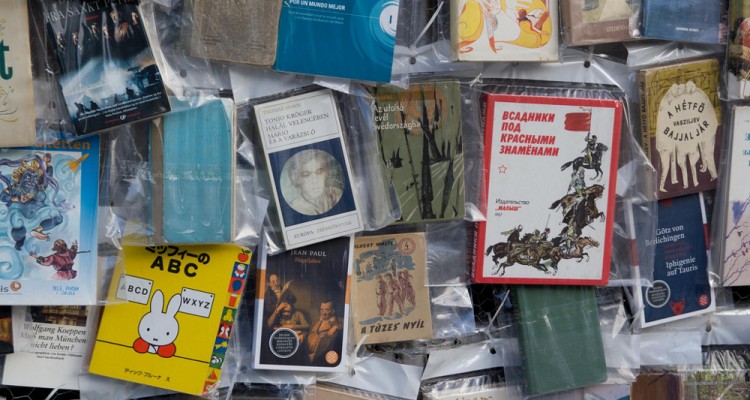Have you ever used Google to translate a foreign webpage into English? You go from a language you don’t understand to English that is not understandable. Your mother tongue is suddenly foreign. The words are recognizable, yet the sentences are mutilated. The webpage’s meaning is a puzzle to be put together, a Dr. Frankenstein’s monster nauseatingly stitched up. I tell my students who are learning Korean, “Please do not use Google Translate on your assignment. The Devil created it to confuse us all.”
The Old Testament story of the Tower of Babel teaches us that God confounded our speech as a punishment for our hubris. We were scattered across the earth before completing the structure that was supposed to reach beyond the heavens. We yearn for a return to a time when, as the Bible says, “the whole earth was of one language and of one speech.” So, with Google Translate, we are building again a machine to undo the language barrier.
I have no fear I will be outsourced, that my job as a foreign language professor and translator will be performed by software any time soon. In fact, software certainly has not made my job easier. I have translated various works—from graphic novels to literary works to commercial documents—from Korean to English. Sometimes, I would be given machine-translated garble, which always proved to be more mentally draining than starting from the original.
How does Google Translate work? Michael Galvez, a Project Manager for Google Translate, is quoted in an NPR article as saying, “What we do is use hundreds of billions of words that Google infrastructure has access to.” Google’s computers scour the web, suck in huge volumes of text, analyze it, and try to learn how people actually write. Google combines that information with high-quality translation transcripts to make a pretty amazing machine translator.
Google Translate might be “producing impressive results and improving quickly” for matter-of-fact articles, but here’s what I want to know: When will I be able to cut and paste the Korean Shaman song in the academic paper I am translating, which is about storytelling and mythology, and have a coherent version in English with a single click?
To answer this question, we need to visualize what a perfect translation would be like, whether created by human or machine. Truly perfect translation, however, is illusive. As Jorge Luis Borges wryly observed in “Pierre Menard, Author of the Quixote,” excellent translation depends not only on the text, but also on the context: “The Cervantes text and the Menard text are verbally identical, but the second is almost infinitely richer.”
No translation is ever final or permanent. The latest translation serves the contemporary reader, but it will become obsolete. Everything changes with time—both the language itself and the reader’s perspective. Just when we think there are no more treasures to dig up, we find ourselves new facts about the text that force us to reinterpret it.
The Economist’s correspondent C.S.W. predicts that “machine translation software may become so advanced as to render second-language learning useless.” But is there really hope for a return to linguistic homogeneity, to a hypothetical time before the fall of Babel? There are things that can be translated by machine and things that can’t. Just as what really matters is difficult to express in any language, what is difficult to translate is worth the human effort.
Eliot Weinberger and Octavio Paz point out in 19 Ways of Looking at Wang Wei: How a Chinese Poemis Translated that “translation is more than a leap from dictionary to dictionary,” which is exactly what Google Translate is. That’s quite right. As Walter Benjamin observed in “The Task of the Translator,” excellent translation is not merely about transferring information, but also about transforming language itself. “The basic error of the translator,” he wrote, “is that he preserves the state in which his own language happens to be instead of allowing his language to be powerfully affected by the foreign tongue.”
A fine translation is poetic. A poem is a microcosm, a system constructed to make us think and feel. So, too, with a great translation—we experience something foreign without having to learn another language. The translator has taken the pains to learn another language, struggled through linguistic acrobatics, so that the reader gets a glimpse of a world beyond the limits of her language.
It is much easier to use Google Translate, just as it’s easier to use a calculator than run equations in one’s own head. However, learning how to do arithmetic involves more than learning basic math and how to push buttons; it involves understanding the values and properties of numbers, as well as the rules behind mathematical equations. Similarly, if Google translate were to serve as the world’s sole translation tool, the same gap would still exist: to remain monolingual is to never experience the disorientation of being a foreign speaker, a decision to forego the possibility of discovering and developing another self.
So many challenges in communication have been overcome by technology. We can talk to almost anyone, anywhere, face-to-face. But if we do not try to get outside our own language, we will be as doomed as the builders of Babel. Until all the surviving languages will form a lingua franca—or Google creates a constructed language that is perfectly uniform—the problem of translation is a human condition not yet solvable by machines. Perhaps, as Eliot Weinberger and Octavio Paz once wrote, the problem of the human condition is the problem of translation: “Every reading of every poem, regardless of language, is an act of translation: translation into the reader’s intellectual and emotional life. As no individual reader remains the same, each reading becomes a different—not merely another—reading. The same poem cannot be read twice.
Further Reading:
- “Translation and the Internet: Evaluating the Quality of Free Online Machine Translators,” by Steven Hampshire and Carmen Porta Salvia
- “Applicability and Challenges of Using Machine Translation in Translator Training,” by Melita Koletnik Korošec
- “The ‘Gook’ Goes ‘Gay’: Cultural Interference in Translating Offensive Language,” by Denisey Filmer
- “Analysis of Google Translate Accuracy,” by Milam Aiken and Shilpa Balan
Image credit: Gustav´s via flickr






